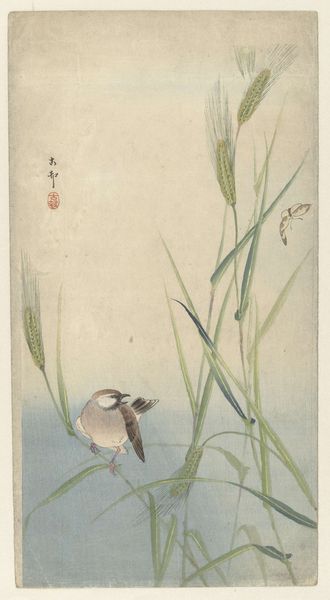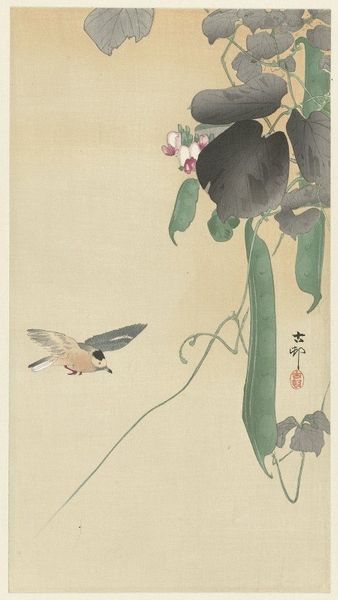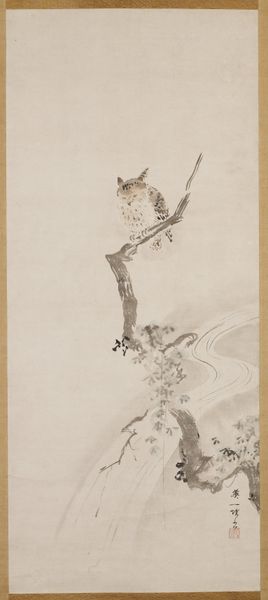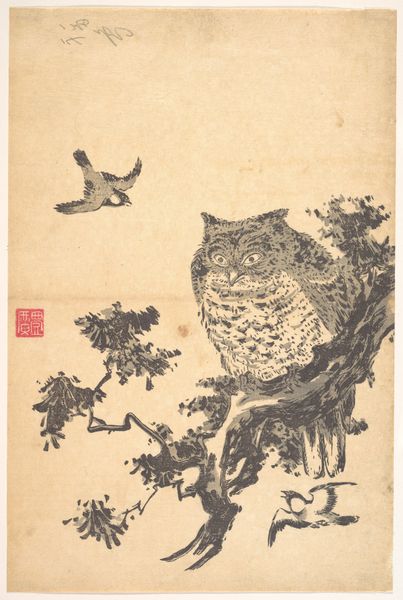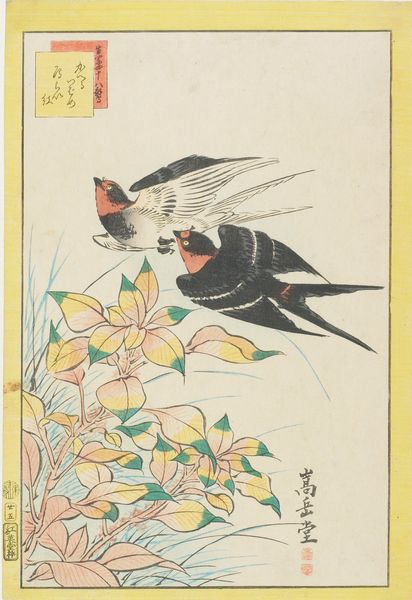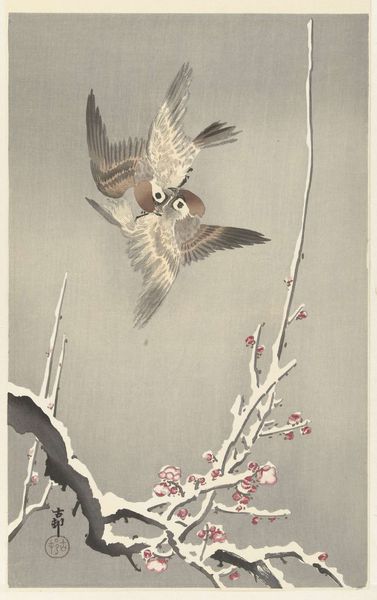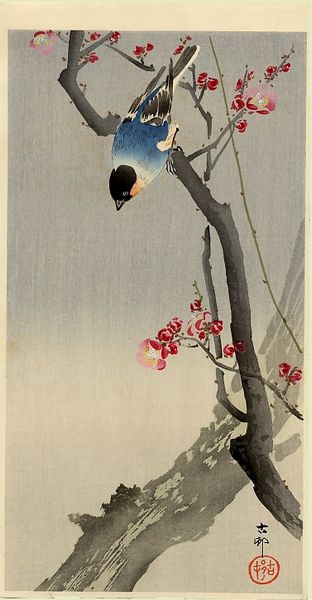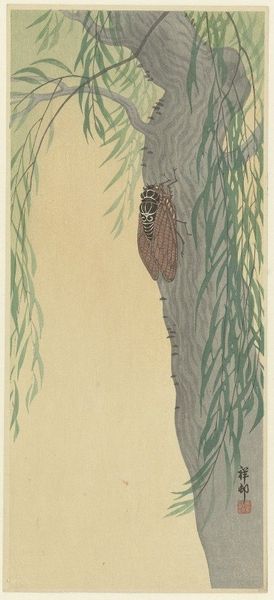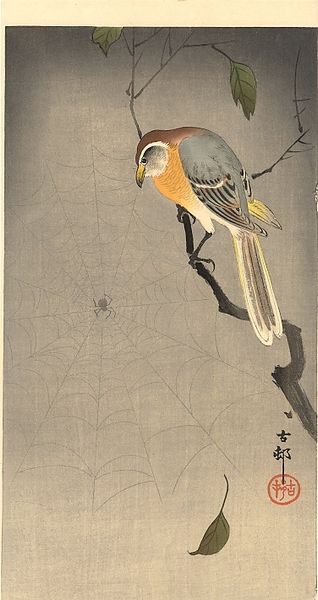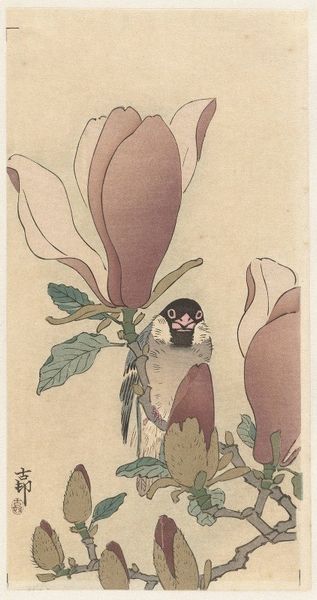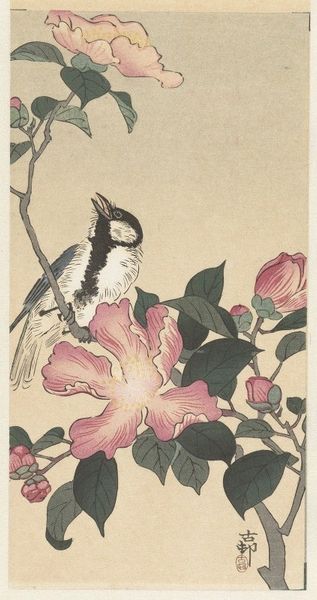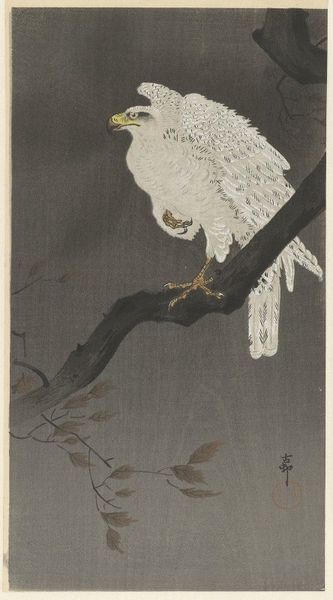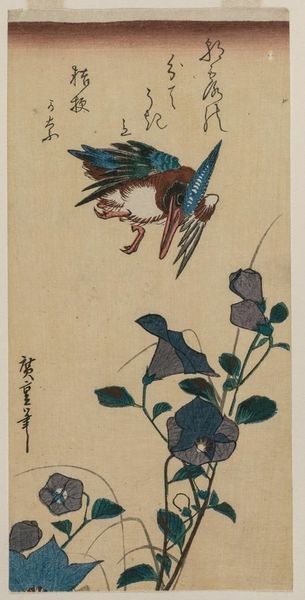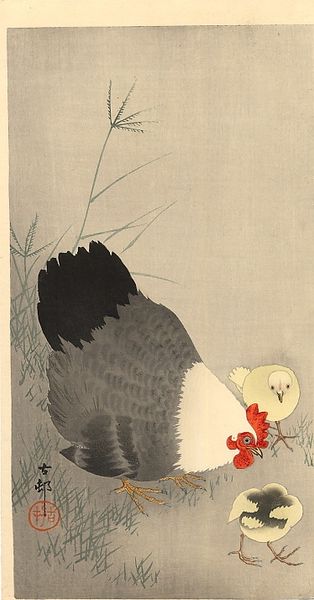
Dimensions: height 135.0 cm, width 41.5 cm, height 211.5 cm, width 56.5 cm, height 8 cm, width 65 cm, depth 8.5 cm
Copyright: Rijks Museum: Open Domain
Suzuki Kason created this painting of a monkey, using ink and colour on silk, sometime between the late 19th and early 20th century. During this period of rapid modernization in Japan, artists grappled with how to maintain traditional artistic practices while engaging with new Western influences. Here, Kason paints the seated monkey looking upwards toward a dragonfly. The monkey, rendered with soft brushstrokes and delicate shading, exudes a sense of quiet contemplation. The surrounding flora hints at the monkey’s natural habitat. In Japanese art and culture, monkeys are complex symbols, often associated with wisdom, protection, and mischief. This artwork provides a window into the artist’s vision and into a pivotal era in Japanese art history. In its masterful depiction of nature and animal life, Kason’s work reflects both an emotional connection to the natural world and an exploration of Japan’s cultural identity during a time of great change.
Comments
No comments
Be the first to comment and join the conversation on the ultimate creative platform.
